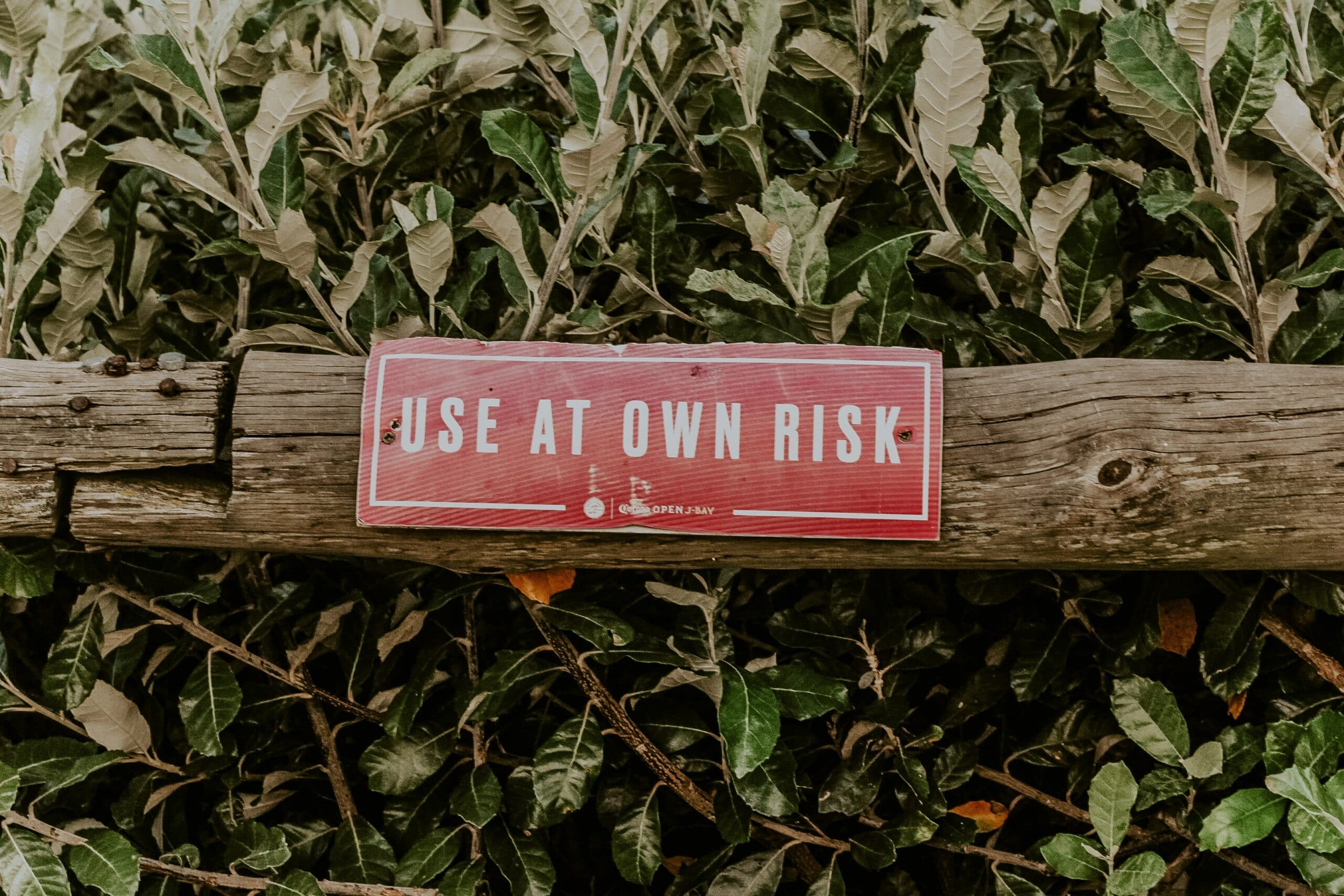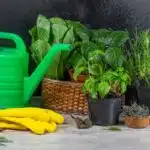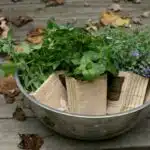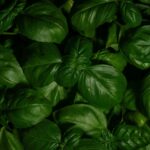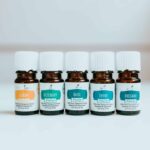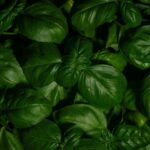When you think of fresh herbs, you may picture bright green leaves in a sun-filled garden. But did you know that you don’t need to have an outdoor space to enjoy the sweet taste of homegrown herbs? With just a little bit of effort and creativity, you can create your own indoor herb garden year-round. Imagine having the flavors of freshly picked basil, parsley, mint, and other herbs at your fingertips at all times!
Indoor herb gardens are becoming more popular as they provide many benefits. Not only do they make a great addition to any kitchen décor with their vibrant colors and aromas, but they also enable people to save money on grocery bills by growing their own food. Plus, gardening is known to reduce stress and improve mental health!
If you’re new to indoor gardening or want to spruce up your kitchen with some extra greenery, we’ve got you covered. In this article we will discuss 10 herbs that can be grown indoors year-round. From basil and thyme to oregano and sage, learn how to add flavor and fragrance to your home with these easy-to-grow herbs!
Benefits Of Growing Herbs Indoors
Gardening is a wonderful way to add beauty and flavor to your home. Growing herbs indoors can be especially fun and rewarding for the green thumb. Not only does it give you access to fresh, homegrown ingredients year-round, but it can also be a great tool for reducing stress and improving the air quality of your home. Here are some of the benefits that come with growing herbs indoors.
For one, having plants near you can bring a sense of calm and make any space feel cosier. And as they grow, they also create oxygen which in turn helps purify the air in your living area. Moreover, indoor herbs are convenient when you’re cooking because these plants are accessible right at your fingertips! This means you won’t have to run to the store whenever you need fresh herbs or spices while preparing meals.
Finally, cultivating herbs indoors is an economical way to get long-term use out of them. When grown properly, plants like oregano, thyme or chives will last a long time! By learning how to tend to their needs within the confines of your own home, you can save money by not having to buy expensive store-bought versions every time you want something for dinner.
These are just some of the many advantages that come with growing herbs indoors year-round – from improved air quality and convenience when cooking all the way through economic savings on expensive spices and more.
Types Of Herbs Suitable For Growing Indoors
Growing herbs indoors has become increasingly popular, with nearly 60% of home gardeners now cultivating their own indoor herb gardens. There are a variety of herbs that can be grown indoors year-round, providing fresh and flavorful ingredients for your cooking.
When it comes to selecting the right herbs for your indoor garden, there are a few important considerations to keep in mind. Herbs that prefer cooler temperatures are best suited for growing indoors year-round; these include most varieties of basil, dill, mint, oregano, parsley, rosemary and thyme. Cilantro is another popular choice but can become bitter during the winter months so you may want to replace this with parsley or chives during the colder season.
Herbs that thrive in warmer temperatures such as cayenne pepper and bay leaves are also suitable for an indoor garden but should be monitored carefully since they may not survive extreme cold. Additionally, some herbs like chamomile and lavender require more light than other varieties so if you don’t have a sunny spot inside your home, these may not be the best option for you. Ultimately, choosing the right herbs for your indoor garden will depend on what type of climate you have available and how easy it is to maintain them throughout the year. Transitioning into how to select the right container is key to ensuring that your plants remain healthy as they grow.
How To Select The Right Container
When selecting the right container for your indoor herb garden, there are a few things to consider. First, you’ll want to make sure the container is deep enough and has adequate drainage holes in the bottom. You’ll also want to make sure the material of the container can withstand moisture without cracking or warping. It’s also important to choose a container with a size that will accommodate the root systems of each herb you plan on growing.
In addition, if you’re using multiple containers for your herbs, consider selecting different styles and sizes for visual appeal. This allows you to create an attractive display that fits with any decor style. If you have limited space available, look for wall-mounted containers or hanging baskets that can be easily mounted in any room of the house.
Choosing a container for your indoor herb garden is an important step in ensuring successful growth and harvesting of herbs all year round. With careful selection and thoughtful placement, you can create an inviting space full of lush greenery that adds both beauty and flavor to your home cooking! Now let’s explore best sunlight conditions for an indoor herb garden so we can get started on our own kitchen oasis!
Best Sunlight Conditions For An Indoor Herb Garden
Surprisingly, 8 out of 10 households have an indoor herb garden. This statistic clearly shows that gardening indoors is popular and beneficial. To ensure your indoor herbs thrive, you’ll need to provide the best possible sunlight conditions.
Direct sunlight is the most ideal for any plant to survive, but not all herbs can tolerate it. Some herbs like parsley, mint, and oregano prefer partial shade and will do well if placed in indirect light near a window that receives bright but indirect sunlight throughout the day. If you don’t have access to natural light, grow lights are an excellent alternative. They come in a wide range of wattages and temperatures that can provide your herbs with plenty of warmth and brightness as they grow.
When setting up your indoor garden, make sure to choose a spot where you can easily monitor the temperature and humidity levels. You’ll also want to make sure your herbs get enough air circulation so they don’t get too stuffy or hot. Once you’ve identified the perfect spot for your herbs, it’s time to gather and prepare the soil for them.
How To Gather And Prepare The Soil
When it comes to gathering and preparing the soil for an indoor herb garden, there are a few key considerations. First, you’ll want to make sure the soil is light and well draining. You can achieve this by mixing a combination of potting soil, compost, and perlite. To ensure that your herbs get all the nutrients they need, you may also want to add some fertilizer.
In addition to selecting the right ingredients for your soil mix, it’s important to consider the pH level of your garden as well. Herbs prefer slightly acidic or neutral soils with a pH between 6.0 and 7.5. If necessary, you can use a soil test kit to check your soil’s pH level and adjust it accordingly before planting your herbs.
Finally, make sure that you’ve chosen a container with good drainage holes in order to avoid waterlogging your plants. Once the soil is ready and placed in the pot or planter of your choice, your plant is ready for basic plant care tips!
Basic Plant Care Tips
It’s important to ensure your herbs are properly cared for in order to get the most out of your indoor herb garden. In this section, we’ll go over some basic plant care tips to keep your herbs thriving all year round.
First of all, you need to make sure that you’re selecting the right herb varieties for inside growing. Some herbs require more sunlight than others, so make sure you choose accordingly. You should also look into the specific needs of each herb when it comes to temperature and soil pH levels.
Finally, it’s essential to provide adequate lighting and ventilation for your plants. For example, if you don’t have a sunny windowsill available for certain varieties, consider investing in a grow light or artificial lighting system. Additionally, be sure to check on your plants regularly and prune any dead or diseased foliage as needed. All of these steps will help guarantee success with your indoor herb garden! With proper care and attention, you can enjoy fresh herbs all year long.
How To Water An Indoor Herb Garden
Watering an indoor herb garden can be a tricky task. It is easy to overwater or underwater your plants, making it essential to find the right balance. Just like humans, plants need the right amount of water in order to thrive and stay healthy. To master the art of watering your indoor herbs, read on!
To start off, you’ll want to think about how often you should water your indoor herbs. Depending on the type of herb and environmental factors, such as air temperature and humidity levels, you may need to adjust your watering schedule. The good news is that most herbs prefer regular but moderate amounts of water. If the soil looks dry on top, it’s probably time to give them some H2O. To check if your plants are receiving enough moisture, stick a finger in the soil up to the second knuckle; if it’s moist then you’re good to go!
It is also important to use a container with proper drainage holes so that excess water can escape from the soil and not cause root rot or mildew issues. Make sure you pour enough water so that it comes out from the bottom of the pot when finished – this will help ensure that all parts of the soil are getting enough moisture and prevent overwatering. With these simple tips in mind, you can rest assured that your indoor herbs will get just what they need!
Understanding common pests and diseases is another key aspect of caring for an indoor herb garden.
Common Pests And Diseases
While the joy of growing herbs indoors can bring a unique satisfaction, it’s important to be aware of any pests or diseases that may arise. With a bit of vigilance and care, you can prevent these issues from spoiling your homegrown bounty.
Unfortunately, common indoor pests such as aphids, whiteflies and spider mites are always lurking around the corner, ready to ruin your carefully cultivated plants. To keep them at bay, make sure to check your plants regularly for signs of infestation like discoloration or wilting leaves. If you do find signs of pests or disease, take immediate action by treating with pesticide or removing affected leaves.
In addition to monitoring for pest infestations, it’s also important to watch out for fungal diseases that can cause leaf spots and rot. This is especially true if you’re growing in humid conditions – be sure to provide good air circulation so that the leaves and stems don’t stay wet for long periods of time. Now armed with this knowledge and prevention tips, you’ll be able to tackle any potential problems before they become too serious. Ready to start growing? Let’s dive into some herbs you can grow indoors year-round!
10 Herbs You Can Grow Indoors Year-Round
Gardening indoors is a great way to add some life and color to your living space while growing fresh herbs you can use in cooking. Growing herbs year-round means you won’t have to worry about seasonality, and they are easy to maintain indoors. Here are 10 herbs you can grow indoors year-round.
The first herb is chives, which have delicate purple flowers and a mild onion flavor. Oregano is another great choice, with its distinct aroma and flavor that pairs well with many dishes. Sage is yet another herb that does well inside; it has a slightly spicy flavor and is also known for its medicinal properties.
Thyme, parsley, rosemary, mint, cilantro, basil, and dill are all excellent options for indoor gardening as well. All of these herbs provide unique flavors or aromas that can enhance your cooking or even be used medicinally. Plus, since they’re grown indoors year-round, you don’t have to worry about the changing seasons impacting their growth or availability.
Parsley is an especially versatile plant when it comes to indoor gardening: it’s easy to care for and provides a rich source of vitamins A, C and K as well as minerals like iron and calcium.
Parsley
Growing herbs indoors year-round can be a fun, rewarding experience for any home gardener. I was delighted when I discovered that parsley was one of the many herbs that could be grown in my own kitchen. It’s a great way to bring a bit of the outdoors inside, and it adds flavor to all kinds of dishes.
Parsley is an ideal choice for indoor gardening because it’s easy to maintain and grows quickly. This hardy herb prefers bright indirect sunlight and moist soil, so making sure to water it regularly is essential. Potting soil with good drainage is also important since soggy soil can cause root rot. Pinching back the stems will promote new growth and prevent overly large plants from overtaking your windowsill or countertop.
With proper care, parsley can provide plenty of fresh leaves throughout the year. The bright green leaves make a colorful addition to salads, soups, sauces, and stews; they can even be used as garnish on special occasions! Growing this versatile herb indoors will ensure you always have some on hand when needed.
Sage
As we roll into the eleventh pick of our indoor herb garden tour, it’s time to take a look at sage. This herb is truly timeless – having been used in cooking and medicine for centuries. It also has a rich cultural history, playing an important role in some religions.
Sage can be grown indoors year-round with proper care and attention, just like the other herbs on this list. Its leaves have a unique flavor that can enhance nearly any savory dish and should be harvested before flowering for the best taste. Sage is a hardy plant, so it won’t require too much fussing over. Just make sure it gets enough sun and water, and you’ll have a steady supply of fresh sage throughout the year!
When it comes to storing your sage harvest, consider drying or freezing for long-term storage. You can also use it fresh in recipes or infuse its flavor into oils or vinegars for extra flavor. With this versatile herb in your arsenal, you’ll be able to whip up delicious meals all year round! Onward now to rosemary…
Rosemary
Rosemary is a great herb to grow indoors year-round. It’s easy to care for, requiring little maintenance and able to thrive in almost any environment. Plus, it has an incredibly distinct smell that can instantly enhance any dish or recipe.
Rosemary is also known for its health benefits. It’s high in antioxidants and can help with digestion, as well as provide relief from joint pain and muscle aches. You can even add it to essential oils and infuse them into your home, giving the air a pleasant scent while also promoting mental clarity and focus.
Growing rosemary indoors couldn’t be simpler – all you need is some potting soil, a container or planter, and plenty of sunlight. With the right environment and proper care, you’ll soon have a thriving rosemary plant that will provide you with fresh herbs all year long.
Thyme
The smell of thyme can transport us to a warm summer’s day in the garden. Its distinctive aroma is often used in Mediterranean cooking, but it can also be grown indoors year-round. Just like rosemary, thyme is a delightful herb to have in your home, bringing an earthy flavor and aroma to your meals.
Thyme is easy to grow and maintain indoors, making it perfect for those with little time or not much space. It requires minimal effort, as long as you keep it watered and give it some sunlight every now and then – even just indirect light from a window will do! Plus, if you’re looking for a low-maintenance herb that won’t take up too much room in your home, thyme is ideal.
Not only does thyme bring flavor and scent to your kitchen – its health benefits are impressive too! Thyme contains important vitamins such as Vitamin A and C which help boost immunity and provide antioxidants. It also has anti-inflammatory effects on the body which can help reduce inflammation caused by illness or injury. With all these advantages combined, it’s no wonder why thyme is so popular amongst indoor gardeners! From its flavorful addition to any meal to its health benefits, there’s no denying that growing thyme indoors year-round is a great idea for any home gardener.
With its delightful flavor, low maintenance requirements and impressive health benefits, adding thyme to your indoor herb garden will be sure to bring much joy!
Oregano
The oregano is a symbol of abundance, its fragrant leaves and stems an invitation to welcome in the bounty of nature. Its aroma is earthy and spicy, like a hint of summer in the middle of winter. As one of the easiest herbs to grow indoors year-round, it’s no wonder why oregano has become such a popular choice for home gardeners.
Oregano grows quickly and can be harvested multiple times throughout the year. It prefers at least six hours of direct sunlight each day and should be watered regularly to keep the soil moist but not soggy. To ensure that your plant gets enough nutrients, use a soil-based potting mix or amend your existing soil with compost or fertilizer before planting. Pruning oregano can also help promote growth and will allow you to enjoy fresh leaves more often.
Since oregano is an annual herb, it will die off after flowering in the fall. But don’t fret – you can easily start again in the spring by taking cuttings from your existing plant or buying a new one from your local nursery. Growing oregano indoors is an easy way to bring flavor and color into your home all year round! Transitioning seamlessly into mint, another herb that thrives indoors...
Mint
Ah, mint. Nothing quite says “fresh” like the piquant aroma of this herb. While the rest of us yearn for days spent in the sun-soaked garden, those with a green thumb can find solace indoors growing mint year-round! Who’d have thought that one could create a veritable oasis on their windowsill?
Don’t let its delicate leaves fool you; this hardy herb can thrive in even the most inhospitable environments as long as it’s given adequate light and water. For best results, use soil with good drainage and keep the plant well-trimmed to ensure it doesn’t go to seed. It may take some experimentation to find what works best for your indoor environment, but once you get it right, you’re sure to be rewarded with endless harvests of fresh mint leaves!
Mint is more than just a garnish; it’s incredibly versatile and can be used in teas, sauces, salads and so much more. Keep your pantry stocked with fresh herbs all year round by growing your own mint indoors–it’s easier than you think!
Frequently Asked Questions
How Much Space Is Needed To Successfully Grow Herbs Indoors?
Herbs are a great way to add flavor and color to your meals, and it’s easy to do when you have an indoor herb garden. But how much space is needed to successfully grow herbs indoors?
Growing herbs indoors doesn’t take up too much room – in fact, you can get away with as little as one window sill or shelf. A small potting tray or container with a variety of herbs can fit into almost any space. The trick is to choose the right kind of planter, making sure that it has enough drainage so the plants don’t become waterlogged.
If you want to go beyond the basics, you may need a bigger area – perhaps an entire room or section of a patio. This will give you more options for lighting and ventilation, which are critical for healthy plant growth. It also gives you more flexibility when it comes to choosing different types of herbs and other plants that require different levels of care. Ultimately, it’s important to consider what type of herb garden best fits your space and lifestyle before making any decisions.
What Is The Ideal Temperature For Growing Herbs Indoors?
Growing herbs indoors can be a rewarding experience, providing fresh ingredients for your cooking year-round. But there are some important factors to consider if you want to have success. One of the most important is temperature – what is the ideal temperature for growing herbs indoors?
When it comes to temperature, herbs need a range between 65 and 70 degrees Fahrenheit during the day, with temperatures dropping 10 degrees at night. If you’re able to maintain these temperatures in your home, then your herbs should thrive. On the other hand, if temperatures get too hot or too cold, your herbs may suffer from stress and diseases and not survive.
To keep an eye on your herb garden’s temperature, use an indoor thermometer or place it near a window that gets plenty of sunlight during the day so that it can receive maximum warmth without getting too hot. You may also want to consider investing in a small space heater or air conditioner if needed to control the environment of your indoor garden more precisely. In addition, make sure you give your herbs enough water and nutrients regularly so they can stay healthy and happy!
Are There Any Special Techniques For Harvesting Herbs Grown Indoors?
Surprisingly, harvesting herbs grown indoors can be just as rewarding as those grown outside. According to a USDA survey, over 6 million Americans are growing herbs indoors for culinary or medicinal use. This statistic is significant because it shows the popularity of herb gardening and how it can be done from the comfort of one’s own home.
When it comes to harvesting herbs indoors, there are a few special techniques that should be used in order to maximize yield and flavor. First, be sure to harvest herbs regularly throughout the year rather than waiting until they become too mature. This ensures that you’re getting the best quality and taste out of them. Additionally, when harvesting, it’s important to snip off the stems near their base with scissors or pruning shears instead of pulling them off by hand. This will help preserve the plant’s health and longevity. Finally, make sure you don’t take more than one-third of the plant at each harvest; this helps prevent shock and encourages healthy growth for future harvests.
By understanding these special techniques for harvesting herbs grown indoors, gardeners can ensure that their plants are thriving and yielding flavorful results. With regular maintenance and care, herb gardens grown indoors can provide a steady supply of fresh ingredients all year long!
How Long Can Herbs Grown Indoors Last Before Needing To Be Replanted?
Growing herbs indoors can be a great way to enjoy fresh flavors year-round. But before you get started, it’s important to know how long your herbs will last before needing to be replanted. The answer can vary depending on the type of herb and other factors.
Most indoor herbs have a lifespan of at least three months, but some varieties may last up to a year or longer. Certain types of mints and basil, for instance, are known for their long shelf life compared to other herbs. It’s also possible to extend the life of certain herbs by trimming them regularly and providing adequate water and light.
On the other hand, some types of herbs don’t last as long indoors; cilantro has a relatively short shelf life compared to other common indoor herbs. If you’re having trouble keeping your cilantro alive, it might be best to grow new plants every few weeks or so. No matter what type of herb you’re growing indoors, proper care is key for ensuring that they stay healthy and vibrant!
Are There Any Special Safety Precautions To Consider When Growing Herbs Indoors?
Bringing the richness of the garden indoors can be a wonderful way to add some freshness and zest to your home. Nurturing herbs indoors with love and care can be a delightful experience, but it’s important to take safety precautions into account. Are there any special safety measures that need to be taken when growing herbs indoors?
When it comes to growing herbs inside, it’s essential to make sure that you provide them with regular light, water and air circulation. Without proper lighting and adequate ventilation, your plants may become weak or even die. It’s also important to keep in mind that certain herbs are toxic if ingested, so make sure that you read up on which ones require special handling and keep them away from pets or children who might be tempted to taste them.
In order for your indoor herb garden to thrive, you’ll want to make sure you’re following all necessary safety precautions while caring for your plants. From researching what types of herbs are safe for indoor growth, to ensuring they have enough light and air circulation – taking the right steps will help ensure you get the most out of your year-round herbal harvest!
Conclusion
Growing herbs indoors can be a rewarding and enjoyable experience, with the right knowledge and preparation. Unfortunately, many people are under the impression that it is difficult or impossible to grow herbs indoors. This could not be further from the truth. With proper space, temperature, harvesting techniques and safety precautions, herbs can be grown indoors year-round with ease.
The irony of this situation is that when it comes to growing herbs indoors, those who think it’s too hard are likely missing out on all the benefits of having fresh herbs at their disposal. Not only does having fresh herbs at home make cooking more enjoyable, but they can also add an attractive touch to any home environment.
In conclusion, growing herbs indoors may seem daunting at first glance, but with some basic knowledge and patience anyone can do it. It’s ironic that people often shy away from such an easy and rewarding activity due to misconceptions about its difficulty. Those who take on the challenge will reap countless rewards in terms of flavor, beauty and convenience!

